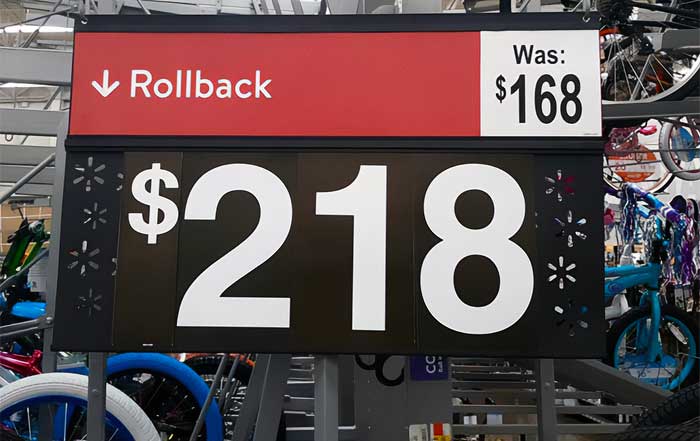The United States stock market remains one of the most influential financial ecosystems in the world, commanding the attention of governments, corporations, institutional investors, and retail traders alike. As a cornerstone of global finance, it represents not just a mechanism for buying and selling equities, but also a reflection of economic health, investor sentiment, and technological progress. For new participants entering the arena, understanding its operational framework, the strategies that define success, and the risks involved is critical to long-term profitability.
While the market’s dynamics may seem daunting at first, its structure follows a set of established principles. The two dominant exchanges, the New York Stock Exchange (NYSE) and the Nasdaq, serve as the primary trading hubs where buyers and sellers converge. Each exchange has its own history, culture, and operational model, but both contribute to the liquidity, efficiency, and transparency that underpin US equity markets.
Readers at usa-update.com/business.html often look for authoritative insights into investment and market trends, and in this guide, we will explore how the US stock market works, who its key players are, the strategies used by successful traders, and the factors that are shaping its evolution in 2025.
The Structural Foundation of the US Stock Market
The NYSE, founded in 1792 under the Buttonwood Agreement, remains the largest stock exchange globally by market capitalization. It operates via a hybrid system that integrates electronic trading with traditional floor-based trading, giving it a unique balance between algorithmic efficiency and human oversight. Traders on the floor, known as designated market makers (DMMs), still play a role in managing order imbalances and ensuring orderly markets — a feature that has helped the NYSE maintain stability during periods of volatility.
In contrast, the Nasdaq, launched in 1971, is the world's first electronic stock market. With no physical trading floor, it relies entirely on advanced technology to match buy and sell orders. Its reputation as the home of technology giants such as Apple, Microsoft, and Nvidia has made it the go-to exchange for growth-oriented companies. Over the past decade, Nasdaq’s innovative listing requirements, faster transaction speeds, and advanced market data services have made it a critical force in global finance.
Both exchanges are overseen by regulatory bodies like the Securities and Exchange Commission (SEC), which ensures compliance with laws designed to protect investors and maintain fair markets. The Financial Industry Regulatory Authority (FINRA) further supervises brokerage firms and registered representatives, enforcing ethical and transparent practices.
For more background on market regulations, readers can explore usa-update.com/finance.html and gain a clearer picture of how these agencies function within the broader financial system.
Investment Strategy Calculator
Discover your ideal trading approach based on your preferences
What's your investment experience level?
Key Participants in the Market
The US stock market is powered by a diverse mix of participants, each with distinct motivations, resources, and impacts on market movements.
Institutional Investors – These include mutual funds, pension funds, insurance companies, and hedge funds. They manage vast pools of capital and can influence prices significantly through large trades. Institutions often employ sophisticated algorithms, proprietary research, and global economic data to inform their decisions.
Retail Investors – Individual traders and investors, who now have unprecedented market access thanks to low-commission brokers like Robinhood and Charles Schwab, are an increasingly powerful force. Their trading activity surged during the pandemic-era bull market and remains influential in 2025.
Market Makers & Specialists – Entities responsible for maintaining liquidity by continuously quoting buy and sell prices. By narrowing the bid-ask spread, they help ensure smooth order execution and minimize price volatility.
Corporate Issuers – Publicly traded companies that raise capital through the sale of stock. Their quarterly earnings reports, strategic announcements, and product launches can dramatically shift market sentiment.
Regulators & Exchanges – While not market participants in the trading sense, their policies and systems set the framework within which all activity occurs.
For ongoing coverage of economic and investor trends, usa-update.com/economy.html offers up-to-date analysis tailored to both seasoned professionals and market newcomers.
Securities Traded on US Exchanges
The diversity of securities available in the US stock market allows traders to pursue strategies that align with their risk tolerance, capital, and investment objectives.
Common Stocks – Represent ownership in a company, with voting rights on key corporate matters and potential dividends. These are the most widely traded instruments.
Preferred Stocks – Hybrid securities that combine features of equities and bonds. While they usually lack voting rights, they provide priority dividend payments and a higher claim on assets in the event of liquidation.
Exchange-Traded Funds (ETFs) – Funds that trade like stocks but hold a basket of assets, offering instant diversification. ETFs can track indices, sectors, commodities, or even custom strategies.
Options – Derivative contracts granting the right, but not the obligation, to buy or sell an underlying asset at a predetermined price before a set expiration date. Options are central to hedging and speculative strategies.
Bonds and Fixed-Income Instruments – Although less prominent on equity exchanges, some fixed-income products trade electronically alongside stocks, especially through ETFs.
Understanding the composition and risk profile of each security type is essential for informed decision-making. For related investment insights, usa-update.com/international.html frequently covers how US securities compare to those in global markets.
Market Indices: Gauging Overall Performance
Market indices function as performance benchmarks and sentiment indicators, guiding both traders and long-term investors.
Dow Jones Industrial Average (DJIA) – Composed of 30 large-cap US companies across various industries, it’s often seen as a barometer of blue-chip performance.
S&P 500 – Tracks 500 of the largest publicly traded companies, offering a broad snapshot of the US economy.
Nasdaq Composite – Highly weighted toward technology and biotech companies, it reflects the performance of the innovation-driven sectors.
While these indices move with the broader economy, they can also be heavily influenced by the performance of a few mega-cap companies. For a deep dive into market movements and trends, usa-update.com/news.html regularly features market recaps and index analysis.
Core Trading Strategies for the US Stock Market in 2025
In 2025, trading strategies have become more data-driven, global in scope, and adaptive to rapid market shifts. While the fundamentals of trading remain constant, technology and access to information have dramatically reshaped execution styles and the pace of decision-making.
Day Trading
Day trading involves opening and closing positions within the same trading session, with the goal of capitalizing on short-term price movements. This strategy demands high concentration, rapid execution, and a deep understanding of intraday technical patterns. Tools like TradingView offer customizable chart setups and community-shared trade ideas, enabling traders to spot opportunities in real time.
Liquidity is a critical factor here — traders tend to focus on high-volume stocks such as those in the S&P 500 or popular ETFs like the SPDR S&P 500 ETF Trust (SPY). Platforms such as usa-update.com/technology.html also track advancements in AI-powered trading algorithms that are reshaping intraday execution.
Swing Trading
Swing traders operate over a longer time horizon, often holding positions for several days or weeks to capture medium-term market trends. This approach blends technical analysis with broader market context. Traders might track sector rotation trends or use macroeconomic data from resources like the Federal Reserve Economic Data (FRED) to anticipate shifts in momentum.
This method requires balancing patience with agility. For instance, a swing trader might build a position in renewable energy stocks after reviewing policy updates from the US Department of Energy and confirming price breakouts on charts.
Long-Term Investing
Long-term investors focus on holding positions for years, aiming to benefit from compound growth and the overall upward trajectory of the market. This strategy often involves dividend reinvestment, which can significantly boost returns over decades. Investors frequently reference financial analysis from credible outlets like Morningstar to evaluate company fundamentals.
A long-term perspective is particularly important in volatile markets. Historical studies from the Center for Research in Security Prices show that staying invested through downturns generally outperforms attempts to time the market. usa-update.com/economy.html provides ongoing updates on macroeconomic trends that influence long-term positioning.
Technical Analysis: Reading the Market’s Pulse
Technical analysis is the study of price action, chart patterns, and trading volume to forecast potential movements. While it has always been a cornerstone for traders, the tools in 2025 are far more advanced.
Indicators like moving averages, Relative Strength Index (RSI), and Bollinger Bands remain staples. However, modern charting platforms integrate AI to detect complex multi-timeframe patterns and send real-time alerts. Websites such as Investopedia’s technical analysis guide continue to be a reliable educational resource for understanding the mechanics behind these indicators.
Traders who master technical analysis often blend it with market sentiment data from sources like the American Association of Individual Investors (AAII) to gain a more complete view of potential market direction. On the internal side, usa-update.com/news.html frequently highlights how technical signals align with major earnings reports and macro events.
Fundamental Analysis: Understanding a Company’s True Value
While technical analysis looks at price trends, fundamental analysis seeks to determine the intrinsic value of a stock. This approach evaluates financial statements, market share, competitive advantages, and industry outlook.
Key metrics include:
Earnings Per Share (EPS) – An indicator of profitability.
Price-to-Earnings (P/E) Ratio – A valuation multiple comparing a company’s stock price to its earnings.
Return on Equity (ROE) – A measure of profitability relative to shareholder equity.
Analysts often source financial data from the SEC’s EDGAR database, which contains quarterly and annual filings from all publicly traded US companies. This allows investors to scrutinize company performance beyond the headlines.
For global comparisons, the Organisation for Economic Co-operation and Development (OECD) provides valuable macroeconomic datasets that help assess broader economic forces affecting a company’s sector. Readers interested in how these fundamentals tie into broader economic narratives can explore usa-update.com/international.html for cross-market insights.
Risk Management: Protecting Capital in Uncertain Markets
Risk management is not just a trading tool — it is a survival mechanism in markets that can shift direction in seconds.
Diversification
Diversifying across sectors, asset classes, and geographies helps reduce exposure to specific risks. Investors often reference portfolio construction frameworks from institutions like Vanguard to balance risk and return effectively.
Stop-Loss Orders
A stop-loss order automatically triggers a sale when a stock reaches a predetermined price, preventing catastrophic losses. While this tool is invaluable, setting stops too tight can lead to premature exits, especially in volatile markets.
Position Sizing
Position sizing determines how much capital is allocated to a single trade. Many professionals use formulas like the Kelly Criterion or fixed-percentage risk models to keep individual losses manageable.
Economic uncertainty in 2025 — from global supply chain pressures to evolving interest rate policies — makes risk management even more essential. Regular coverage at usa-update.com/finance.html helps traders stay ahead of developments that can impact portfolio safety.
Trading Platforms and Tools: Choosing the Right Infrastructure
Selecting the right trading platform is as critical as the trading strategy itself. In 2025, competition among online brokers has pushed innovation, making advanced tools more accessible to both beginners and professionals.
Full-Service Platforms
Established brokers like Charles Schwab and Fidelity Investments provide comprehensive research, in-depth market analysis, and a variety of order types. These platforms often include integrated news feeds, drawing from reputable sources such as The Wall Street Journal and Bloomberg, ensuring traders have timely market intelligence.
Their professional-grade charting, fundamental screening tools, and wealth management services make them popular with long-term investors seeking a single, all-in-one environment.
Discount and Zero-Commission Brokers
Brokers like Robinhood and Webull have revolutionized retail trading by eliminating commissions and making the process more user-friendly. While some critics highlight the risks of gamification in these apps, they remain widely used by active younger traders. The growth in mobile-first platforms is detailed regularly at usa-update.com/technology.html, where advancements in trading interfaces and AI-powered order execution are closely tracked.
Specialized and Professional Platforms
For traders seeking speed, precision, and custom strategy automation, platforms like Interactive Brokers and Thinkorswim by TD Ameritrade offer algorithmic trading capabilities and API integrations. These allow seamless connection to tools such as MetaTrader and proprietary backtesting software, enabling deeper customization for complex strategies.
Regulatory Environment: Safeguarding the Market
The US stock market’s credibility rests on strong regulatory oversight, ensuring that participants operate on a level playing field and that investors are protected.
The SEC
The Securities and Exchange Commission (SEC) enforces securities laws, oversees exchanges, and requires public companies to disclose financial information. Its official site, sec.gov, provides free access to filings, enforcement actions, and investor education resources.
FINRA
The Financial Industry Regulatory Authority (FINRA) supervises brokerage firms and registered representatives, enforcing ethical sales practices and transparent communications. For a detailed understanding of FINRA’s role in licensing and compliance, traders can explore FINRA.org.
Key Legislation
Regulatory frameworks like the Sarbanes-Oxley Act and the Dodd-Frank Act were enacted to enhance corporate accountability and reduce systemic risk. Periodic updates to these laws ensure they address evolving challenges such as cybersecurity threats and high-frequency trading. Coverage on regulatory changes that impact investor protections can often be found at usa-update.com/news.html.
Tax Implications for Traders and Investors
Understanding tax obligations is critical to maintaining profitability. The IRS categorizes stock market gains into short-term (held less than a year, taxed at ordinary income rates) and long-term (held more than a year, taxed at lower rates) capital gains.
Tax-Advantaged Accounts
Accounts like 401(k) plans and Roth IRAs allow investors to grow wealth with either deferred or tax-free withdrawals, depending on the account type. The IRS official guidance provides updated limits and rules for contributions each tax year.
Record Keeping
Maintaining accurate records of all trades, dividends, and capital gains is essential for compliance and strategic tax planning. Many traders rely on specialized tax software like TurboTax or professional CPAs to ensure accuracy.
For market participants navigating both performance and tax efficiency, usa-update.com/finance.html offers insights into strategies that optimize after-tax returns.
Leveraging Technology for Competitive Advantage
Technology has transformed market research, execution speed, and risk analysis. In 2025, traders use a mix of AI-powered screening, blockchain-based settlement systems, and real-time sentiment analysis to gain an edge.
AI and Machine Learning
Platforms like QuantConnect and Kavout use machine learning to backtest strategies against decades of historical data. This allows traders to optimize parameters for maximum efficiency before deploying capital in live markets. Articles on usa-update.com/business.html often highlight how AI adoption is reshaping investment strategies globally.
Blockchain and Settlement
Settlement times are decreasing, with T+1 (trade plus one day) now standard in US markets, and pilot projects exploring instant settlement using blockchain technology. Updates from the Depository Trust & Clearing Corporation (DTCC) provide transparency into these technological transitions.
Sustainable and ESG Investing
Environmental, Social, and Governance (ESG) factors are increasingly integrated into portfolio strategies. Investors are seeking companies that demonstrate sustainable operations, fair governance, and positive societal impact.
The Growth of ESG Funds
Funds like iShares ESG Aware MSCI USA ETF (ESGU) have attracted billions in assets. ESG metrics are tracked by agencies such as MSCI ESG Research, which rates companies on sustainability performance.
Impact on Returns
While critics argue that ESG screens can limit investment opportunities, numerous studies from the Harvard Business Review and others show a growing correlation between strong ESG performance and long-term financial stability. usa-update.com/international.html frequently examines ESG trends across global markets.
2025 Investment Outlook: Opportunities and Challenges
As 2025 unfolds, the US stock market stands at a pivotal moment, shaped by technological innovation, geopolitical shifts, and evolving consumer behaviors. For investors, the ability to adapt strategies to this environment will be crucial.
Key Growth Sectors
Artificial Intelligence and Automation – Companies specializing in AI applications, semiconductor production, and robotics are experiencing sustained growth. Reports from PwC project multi-trillion-dollar contributions from AI to the global economy by 2030, creating fertile ground for investors seeking high-growth opportunities. For local coverage on how these innovations affect US businesses, usa-update.com/technology.html provides consistent analysis.
Green Energy and Sustainability – Renewable energy firms, battery technology innovators, and sustainable infrastructure providers continue to attract capital, driven by government incentives and international climate commitments. The International Energy Agency offers extensive market forecasts in this sector.
Healthcare and Biotechnology – With advances in personalized medicine, biotech research, and telehealth, healthcare remains a defensive yet growth-oriented sector. Coverage on usa-update.com/economy.html often explores how healthcare trends intersect with market performance.
International Market Interconnections
The US stock market is deeply interlinked with global economic health. Events such as European Central Bank policy changes, trade negotiations with Asia, or currency fluctuations in emerging markets can send ripples through Wall Street. Resources like the World Bank provide macroeconomic data that helps investors gauge the interconnected nature of capital flows.
On the domestic side, usa-update.com/international.html covers how international events impact US-based investors and sectors.
Adapting Strategies for a Globalized Economy
In 2025, even investors focused on US equities must remain globally aware. Supply chain resilience, raw material availability, and cross-border partnerships all affect company performance. For example:
A US tech manufacturer may face production delays if key components from Asia are disrupted.
Consumer goods companies might see margins shift with currency fluctuations in export markets.
Energy firms could experience revenue spikes or drops depending on OPEC+ production decisions.
Professional portfolio managers increasingly use currency hedging and international ETFs to balance risk from foreign exposure. Resources such as the IMF Data Portal help track economic health across regions.
Behavioral Finance: The Human Factor
Even with advanced algorithms and AI-driven research, human psychology still plays a significant role in trading outcomes. Behavioral finance examines how emotions and cognitive biases — such as overconfidence, loss aversion, and herd behavior — influence investment decisions.
For example, during periods of market volatility, investors may panic-sell despite long-term fundamentals remaining strong. Conversely, the fear of missing out (FOMO) can drive speculative bubbles. Educational resources from the CFA Institute explore how self-awareness and disciplined strategies can mitigate these tendencies.
usa-update.com/news.html frequently publishes commentary on how sentiment shifts drive short-term market movements, offering context for retail and institutional decision-making.
Building Resilience Through Education and Continuous Learning
A hallmark of successful investors is continuous education. Whether through formal certifications like the Chartered Market Technician (CMT) designation, university finance courses, or self-directed learning, staying informed is essential.
Web-based platforms like Coursera and MIT OpenCourseWare offer accessible financial education for all levels. Combining these with real-time news from credible outlets and in-depth market coverage at usa-update.com/business.html creates a well-rounded informational foundation.
Practical Steps for New and Experienced Traders in 2025
Define Objectives Clearly – Align every trade or investment with a specific goal, time horizon, and risk tolerance.
Choose the Right Broker – Match platform features to your trading style and strategy needs.
Balance Technical and Fundamental Analysis – Use both to avoid one-dimensional decision-making.
Practice Disciplined Risk Management – Position sizing, diversification, and stop-loss orders are non-negotiable.
Stay Globally Informed – International markets can influence US prices more than ever.
Review and Adjust Regularly – Quarterly portfolio reviews help maintain alignment with evolving market conditions.
These principles, combined with patience and adaptability, give traders the best chance of thriving in the US stock market. For regular updates on these practices, usa-update.com/features.html curates expert insights and tools.
Conclusion: Navigating the Future of US Stock Market Trading
The US stock market in 2025 remains a complex yet rewarding environment for disciplined participants. Its structure — anchored by the NYSE and Nasdaq — provides a robust platform for raising capital, fostering innovation, and enabling wealth creation. Yet, success depends on a trader’s or investor’s ability to combine knowledge, technology, and strategy with the patience required to ride out inevitable volatility.
From short-term trading to long-term investing, from mastering technical indicators to understanding macroeconomic forces, the modern market rewards those who approach it with both precision and flexibility. The integration of AI tools, sustainable investing trends, and global economic awareness will increasingly define success in this new era.
Readers who want to track evolving opportunities, sector performance, and market analysis should explore usa-update.com regularly, as it provides timely, data-backed insights tailored to the needs of both retail and institutional investors. With continuous learning, disciplined execution, and a focus on fundamentals, the path to achieving financial goals in the US stock market is not only possible — it is within reach for those willing to engage strategically.










